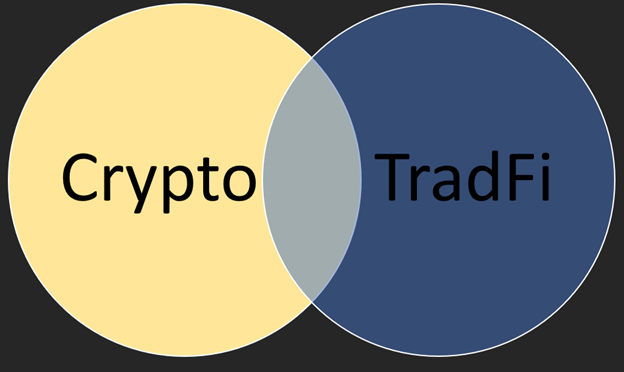 |
| By Jurica Dujmovic |
September is crypto's cruelest month.
Every year, it gives us corrections, liquidations and shaken confidence.
Last month delivered all that and more.
It changed the conversation from "Will crypto survive?" to "Who owns it?"
What Made September 2025 So Unusual
What made this September unusual wasn't that crypto rallied or crashed. (Or the fact that it did both.)
Rather, it's that institutions stopped treating crypto as something to avoid.
Instead, they started treating it as infrastructure to control.
Consider that in September:
- Bitcoin held its gains. Yet, some $3.5 billion in leveraged positions got liquidated.
- Nine European banks announced a stablecoin for 2026. Meanwhile, crypto firms bought asset managers.
- Several new crypto ETFs launched, including the first DOGE ETF. And with the SEC easing listing standards for spot crypto ETFs, you should see more come to market much faster than before.
A lot of opposites here, you say? You’re not kidding!
Once you understand that, you can see the opportunity. After all …
These contradictions aren't noise — they're the signal.
Let’s look closer at these new developments in order, starting with all that volatility from …
Bitcoin’s Big Liquidation
The $3.5 billion liquidation is not a bug or a scandal.
It's the tuition fee that crypto charges for overleveraging.

This suggests the infrastructure is maturing.
But the risk tolerance isn't.
Which brings us to the …
Euro-Backed Stablecoins Set for 2026
When ING, UniCredit and seven other European banks announce they're launching a stablecoin …
And they’re not partnering with Circle or Tether but, rather, building their own …

You're watching convergence in real time.
Meanwhile …
Crypto Firms Want Asset Managers
As asset managers increasingly pivot to crypto, a strange thing is happening.
Crypto firms are targeting institutions for their next investment.
As in, they want to buy those fund houses!

It’s an intriguing phenomenon:
- Banks want blockchain payment rails without surrendering control. And …
- Crypto firms want to buy asset managers for custody infrastructure and regulatory legitimacy.
Both sides realize they need what the other has.
But to be clear, when crypto firms acquire traditional asset managers …
Not just partner with them, but buy them outright …
They’re not trying to become more legitimate.
They're shopping for licenses, compliance teams and access.
That is, access to institutional clients who won't touch a company that's purely crypto-native.
This is all a backdoor integration strategy.
Instead of waiting for regulators to accept them, they're buying businesses that regulators already approved decades ago.
The result is a financial Chimera.
Rather than a lion with a goat’s head, we get crypto innovation that’s wrapped in asset management paperwork.
Spot the Trajectory of the Crypto Spot ETF Trend
The current ETF wave isn't slowing down.
September brought several new spot crypto ETFs.
Notably, Rex-Osprey’s Dogecoin (DOJE) and XRP (XRPR) ETFs, along with the Grayscale CoinDesk Crypto 5 ETF (GDLC).
All three launched with strong trading volume.
But they're also pulling crypto further into existing financial regulation.

Every new ETF is a bet that investors want exposure to cryptos.
We can also extrapolate that to mean that investors don’t necessarily want ownership of these cryptos.
If that bet pays off, then the "be your own bank" narrative loses yet another battle.
That directly ties into what we just talked about, with asset managers and crypto firms becoming two overlapping circles in an unexpected Venn diagram.
One where the circles keep moving closer together.
While TradFi and crypto firms start to converge …
The very instrument that makes crypto accessible to asset managers and individuals is changing the very fabric of crypto.
How September Changed Crypto Investing
With these new developments, here are your respective takeaways for October and beyond:
If September's $3.5B liquidation didn't convince you to avoid high leverage, nothing will.
The event wasn't caused by fraud or hacks. Just volatility plus overleveraging.
Crypto lets you borrow 10x, 20x, even 50x your position. Just because you can doesn't mean your risk tolerance should.
Then there’s the European bank stablecoin launches in 2026.
Which means USDC and USDT will face direct competition from institutions. Ones that can't go bankrupt the way Circle or Tether theoretically could.
If you're holding stablecoins for yield or payments, start thinking about what happens when "decentralized" stables compete with systemically important bank-issued ones.
If you're watching crypto firms buy asset managers, understand the signal.
They're not pivoting away from crypto. Rather, they're building Trojan horses.
These acquisitions give them regulatory cover to serve institutional clients while keeping their crypto products live.
For investors, it means more "crypto exposure" products are coming. But those will be filtered through compliance departments that will strip out anything too experimental.
Expect more structured products, less actual innovation.
Like ETFs.
If you buy shares of an ETF, remember that you don't own the underlying crypto.
If an exchange implodes, your ETF shares are fine. But if the ETF sponsor (like Rex-Osprey or Grayscale, for example) implodes, however, you've got a different problem.
And be sure to check the expense ratio. These new products generally carry higher fees than comparable equity index funds. You're paying for convenience and novelty — so make sure the premium is worth it.
Bottom Line
September showed the financial system absorbing crypto's experiments while keeping the volatility at arm's length.
- Banks are issuing stablecoins, but not holding Bitcoin.
- Asset managers are buying crypto firms, but keeping them as subsidiaries.
- ETFs are attracting more people to cryptos. But not as owners but, rather, shareholders in a fund that aims to reflect the underlying crypto’s prices.
September proved that these new developments can all coexist.
But let’s be sure call them what they are … developments, not innovation.
Best,
Jurica Dujmovic.
P.S. There is one crypto innovation that belongs on your radar.
And Juan Villaverde is revealing it this coming Tuesday, Oct. 7, at 2 p.m. Eastern.
It’s version 2.0 of his Timing Model. It’s newly enhanced with AI … along with the power to generate AVERAGE gains of 6,630% for each crypto asset.
Juan’s also using it to reveal the day in October to buy Bitcoin and other top cryptos …
BEFORE the next run-up to all-time highs begins.
If you think September brought radical change, wait until you see how the timing model can help you take advantage of October’s changes.


